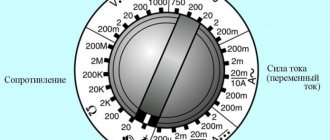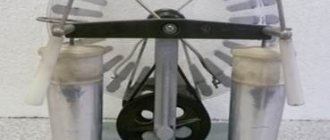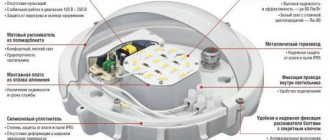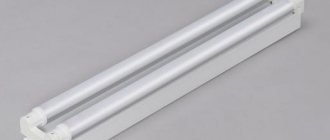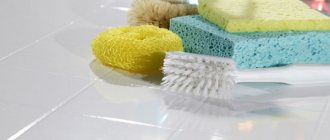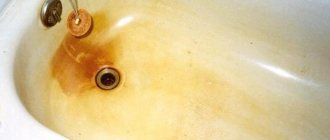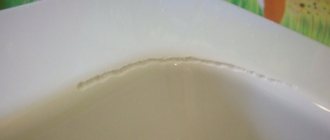To watch movies and images, you can create not only a simple projector for your phone with your own hands, advertising logos, but also more complex designs using spare parts from electronics, ready-made control modules. The picture of a primitive homemade product will be a little blurry, but this will be enough for watching feature films. And if you approach the assembly thoroughly and create an LED projector, then in terms of functionality it will be comparable to factory models and at the same time will be several times cheaper.
How the projector works
A projector, like all kinds of sliders and filmoscopes, is based on the laws of optics: when the image carrier interacts with light streams, the rays are refracted, the image is enlarged, and transmitted to the screen.
Methods for making a projector with your own hands can be different, based on the simplest and most basic - passing light through transparent media (magnifying glass, lenses), such devices are called slide projectors. Epiprojectors are based on reflection from opaque objects. Digital multimedia DLP and LCD are of the highest quality, with extremely clear images and accurate color rendition, since they do not use the traditional principle of a magnifying glass. In the first, the flow is reflected from a special chip and created by a logical matrix; in the second, a transparent LCD panel is used, providing a bright, vibrant color range.
It is extremely difficult to assemble a digital multimedia structure on your own - you will need to synchronize the work of mechanics, optics, and digital parts. But it is quite possible to make a projector for a phone (slide projector) or a more complex installation with digital equipment with minimal knowledge of electrical engineering (in the first case it will not be required at all).
How to make a mobile projector with your own hands
Watching movies or photos on the big screen is always an entertaining activity. But, for this you need to buy a projector for your mobile phone, but looking at its cost, you want to immediately abandon this idea. In this article, we decided to tell you how to make a projector for a mobile phone with your own hands from a box, a magnifying glass and tape. Let's look at the step-by-step instructions and see several ready-made devices.
How to make a projector for a mobile phone with your own hands: necessary materials
To make a projector for a phone, we don’t need to collect a lot of materials, we will need: a shoe box, a sharp knife, tape, a paper clip and a magnifying glass. All of these materials can be found in your pantry without much effort.
I would like to pay special attention to the magnifying glass; it is the most important element of our projector. If you have a Soviet-quality one lying around at home, use it. If not, then don’t try to buy a cheap one in the store, because this will lead to terrible quality. Try to look at good options, in any case, you can use it in the future. If we talk about multiplicity, then choose X10. You will find out more detailed information in the article: making a laser level with your own hands.
- First of all, we must find a box with you, it must be of good quality and have dark walls, if not, we can put a black garbage bag on it. Next, remove the magnifying glass, apply it to the box and simply trace it. The glass must be placed in the middle, to avoid making a mistake, draw two diagonals.
- Cut a hole on the box using a regular knife.
- We fasten the glass; for this you can use adhesive tape or tape.
- We prepare the place for installing the telephone. It's best if you have a special case. If you don’t have it, then you can try using regular tape or making a special device from the box.
- Installing the phone is the most important step. We go into a room where there is no light at all and begin to look for a place to install the phone. It is optimal to install it in the middle of the box, but here everything depends on the lens, so try several options at once.
- We make a hole and run the charging wire.
- This is what a DIY phone projector will look like.
There are no difficulties, there are certain snags that should be taken into account. Here are some answers to your questions:
How to improve image quality on a mobile projector? – try to find the best place to install the phone, also try to adjust the magnifying glass.
What to do if the mobile projector does not work at all? – in this case, you definitely made a mistake with the choice of magnifying glass. Try looking at other options. Check out this interesting article where we are making a water leakage sensor and making it from scrap materials.
How to improve image clarity on a mobile projector? – as the craftsmen say, you can try installing a second magnifying glass. With its help it will be possible to give a clearer picture. Here the magnifying glass will act as a quality adjustment tool. And the phone will not be so far from the first glass.
We found this video for you, here you will find out what a homemade projector for a mobile phone is capable of.
What must be done
To make a projector for Android, you must follow these tips:
- To transfer a picture, you need to put the image upside down; to do this, use a mobile application, one of which can now be called Ultimate Rotation Control. If you do not do this, the picture will be displayed upside down.
- We set the brightness of the mobile phone to maximum.
- The room should be dark; if there is a lot of light, you will not see the picture.
This is how you can make a projector for your mobile with your own hands, there are no difficulties, but you can’t say that you will watch the picture in good quality. Viewing will be pleasant and convenient, but you shouldn’t have high hopes.
Where to buy mobile projectors
We recently came across an excellent box from Aliexpress, this is what it looks like.
This is an ordinary box, but with the help of it you can even adjust the image quality; you can install the phone anywhere. Even a laptop can be adjusted to fit it, which is already considered a chic option. But there is one significant problem - the cost, now the price of such a box is 40 dollars, which is a lot.
There are also ready-made factory projectors for mobile phones, but we recommend buying them for people who really like to watch movies in this way. After all, the average cost of a projector is $250, and that’s still average.
Sources: https://vse-elektrichestvo.ru/poleznye-sovety/samodelki/proektor-dlya-mobilnogo-svoimi-rukami.html https://myprojector.ru/blog/123.html
Overhead projector with smartphone
A smartphone and similar gadgets have a small screen. The task is to enlarge its image and broadcast it onto a flat surface. For this purpose, illumination and optics are used: a large magnifying glass, a magnifying glass. In projectors, such elements are called Fresnel lenses. With minor additions, this principle is used in factory products of this type.
What you will need:
- large magnifying glass. The size must correspond to the smartphone screen located at some distance so that the picture is not cropped;
- completely darkened case: cardboard, wooden (plywood) or plastic box. You can make anything out of a box, for example, a shoe box. It’s easy to create an element with internal fasteners (fixing partitions) with your own hands: any material that can be cut and fastened will do;
- if cardboard is used, then the homemade product is assembled using tape, glue, a stationery knife, pencil, ruler, and compass. For wood, you may need a jigsaw, for plastic, it is also a soldering iron or a burning device, the heated tip of which can be used to process the material.
Let's look at the simplest homemade projector from a phone with a cardboard body:
- Place a lens on the front wall of the box and trace it with a pencil. Cut a hole and secure the magnifying glass there with glue; tape can also be used. It is important that these materials do not fall into the gap, which will spoil the image.
- They place the smartphone inside and experimentally correlate the distance to its screen from the lens so that the picture is not cut off by it. At this point, holders - partitions - are glued.
- A hole is made at the back for the charging cable.
- They insert the phone into the seat; first you need to install an application that flips the image 180°, or deactivate auto-rotate and place the smartphone upside down.
- Viewing is organized in a well-shaded place.
Variety and availability of materials
There is no need to throw old and used things into a landfill - they will make excellent homemade items that will certainly come in handy at home or in the country. Thus, you will not only give a second life to old things, but also save on the purchase of materials. For example, you can make a carpenter’s mallet from scraps of boards, or a fireplace for a cauldron from an old cylinder.
It should be noted that the issue of choosing materials for homemade products is always relevant. Each craftsman decides for himself what to make this or that homemade product from, but many agree that there is nothing wrong with using production waste or leftover materials after home renovations.
Our website contains original ideas for every taste: for those who want to save money and therefore use what is at hand, and for those who prefer to make something only from new (purchased) materials.
For example, to make a sliding interior door in a private house, you can use both old and new materials.
But you can make a dining table made of wood and profiles exclusively from scraps left over after a renovation or any project.
You can also make a lot of interesting things from leftover plastic or polypropylene pipes - for example, a convenient portable organizer for storing self-tapping screws and bolts with nuts.
You can also make a device for cutting sheet foil from PP and PVC pipes or make a stand for storing files.
Projector from tablet, laptop
When projecting a device from a laptop, tablet, or even from a small computer monitor (the PC unit itself will stand separately), the image quality will be better, since the screen is larger.
Let's consider a “humane” method in which there is no need to disconnect the matrix with the monitor from the laptop. The inhumane method is the same, but the gadget is disassembled, the specified assembly is pulled out and used as a display, in which case you will need an extension cable to the part with the keyboard (it is sold in electronics stores and on online sites).
You will need the same tools as in the previous case, but you need to take a larger cardboard box or box, for example, from large household appliances. Its front part should fit the size of the matrix, the length should be from 50 cm. The lens should be large. You can buy (Fresnel or regular lenses), remove from a device for reading full-page books or from special lamps that are used in restoration work, in medicine, in laboratories (an illuminated circle with a magnifying glass).
Assembly process step by step:
- For a magnifying glass, make a hole at the end of the box slightly smaller than the lens to securely fasten it.
- Fix the lens with tape, silicone glue, acrylic sealant, epoxy resin. The fit should be tight to prevent light from entering.
- A connector for the laptop screen is cut on the opposite wall. The edges of the cardboard should overlap it for the reason stated above.
- Open the laptop and place it upside down, so that the keyboard is on top of the box and the monitor is placed in the hole for it. Thus, the principle of optical reversal by the lens that we need is simultaneously implemented.
You can adapt the tablet in the same way as described.
Projector for Android phone
As you can see, many users are interested in the ability to turn their smartphone into a projector
If you open Google Play and search for “Projector,” you will see a wide range of applications that offer to turn your smartphone into a projector. The descriptions of some even explicitly state that it is the camera that acts as a projector, projecting the image from the screen onto the wall through a matrix. As a result, some applications have accumulated several million downloads. But they don’t actually make any kind of projector out of a smartphone.
Is it possible to increase the RAM on your phone?
If you open reviews for any of these applications, you will see that not a single user received what the developer promised. No, I would also understand if these were applications for controlling real projectors, as is often the case with applications supposedly for measuring blood pressure - they simply control external devices via Bluetooth. But no, their creators directly promise that they will turn any smartphone into a projector. In reality, the application simply starts showing ads.
Professional projector made of LCD matrix and electronics
Let's make a reservation right away: a homemade LED projector is labor-intensive to assemble, the total cost of parts is approximately $1000, but it is cheaper than factory devices of this level. Spare parts are purchased from well-known Chinese trading platforms.
What you will need:
- LCD monitor (5.98 inches, 2560×1440) with HDMI card ($200). You can take these elements from used devices; any 2K LCD display will do. No backlight module required;
- laser-cut polymer body ($100). Or you can create it yourself with a plywood jigsaw. There are AutoCad drawings online; (https://cdn.instructables.com/ORIG/F4I/A5S0/IN0TKC4U/F4IA5S0IN0TKC4U.zip);
- 2 Fresnel lenses ($50 each): with focal lengths of 120 and 185 mm. The first (F120) is placed between the LED and the LCD matrix, the second (F185) - between it and the projection lens;
- F190 or 200 lens (up to $50);
- one of the following LEDs with a suitable driver (about $50): regular 150 or 128 W with heat sink;
- alternative - 100 W, not particularly bright, but suitable for a dark room;
- the best option, but more expensive (together with the driver $185) is SVT-140 “Luminus Devices”, such elements are used in medical endoscopes;
Next, assembly step by step.
Case design, checking the LCD matrix
The display must be purchased with an HDMI card. Also, for convenience, it is recommended to purchase an FPC extension cable (cable) and a connection board (connector). We check the matrix by pressing and holding the backlight connector. Next, we proceed to constructing the body.
The body is assembled according to the drawings. You will need the usual tools: knife, pencil, ruler, jigsaw, glue. Materials: textolite, plastic, wood. You can adapt an old computer unit, but then you will need tools for working with tin: wire cutters, a hacksaw, a screwdriver and drills for making holes for bolts.
Partitions and holders are made inside. Fresnel lenses are inserted into the seats, then the holder itself is inserted into the clamps of the LCD monitor. In this case, it is necessary to exclude any reflection of light from the partitions, otherwise the image quality will deteriorate. For this purpose, sandpaper the surfaces, making them matte.
Monitor mount
We will dwell on this part in more detail, since careless assembly of the element can ruin the final result. The display is small and has very thin bezels, making it difficult to prevent loss of light output. It is advisable to look at the drawings from the Internet - they take this nuance into account. If we approach this stage without proper care, we will get a picture with noticeable white stripes along the edges.
If you use a standard drawing, it provides for the presence of 3 parts of the holder: 2 for permanent fixation and 1 for temporary fixation. It is advisable not to touch the display while working: the prints will be enlarged in the final image. The problem is eliminated if you perform the assembly wearing medical gloves.
LED Installation
The LED is attached to a heat sink, which is purchased as a kit or separately, and you can also use computer radiators from the processor air cooling system. Next, we build a holder for this structure using the same drawings from the network. The diode is screwed with M3 screws to the radiator, the landing pad is lubricated with thermal paste. Then a condenser lens is installed in front of the light source, usually a mount is included in its kit.
Wiring, cooling
Our example uses a standard drawing that provides mounting locations for fans. We install them there, you can include a rotation speed regulator in the circuit (a 10 kOhm trimming resistor, soldered to one of the wires), there are also boards with it and a temperature sensor: by reducing the speed, the noise of the structure will decrease.
Connection rules:
- voltage from the 220 V home network is supplied to the power supply for the LED, coolers and HDMI chip via USB;
- The power supply produces direct current, it is connected to the diode and the impeller. Separate power supplies can be used. The unit with the USB connector will be connected to the HDMI chip;
- install 2 switches - for the LED, display, coolers - which will allow the device to cool for some time after turning off;
- The LED gets very hot, the matrix gets less hot, but it also gets hot, and the heat generated is intense; black spots may appear on the monitor due to overheating, and it will fail. Therefore, it is necessary to use several fans, at least 2 of different sizes, correctly placing them for blowing and blowing;
- the screen is placed next to the light source (gap 110–130 mm).
Checking the arrangement of elements
Check the wires according to the photos attached to the article. Then analyze how the LED is positioned - with the correct gap between it and the rear lens (F120), the light illuminates the entire active area of the screen. The grooved sides of the two lenses should be facing towards the monitor.
Other combinations of lenses are also used, but the one described is optimal for a 5-6-inch display. You can also take optics with a long focal length - F120/F220 with projection F230 - as the focal length decreases, the image increases. In our case, if we use the CBT-140 diode, the video projector will provide clarity at which you can see the pixels on the projection surface. And focusing will be superior to some factory units.
Recommendations
The distance between the optics is selected by trial and error, tips:
- between the display and the magnifying glass 15–20 mm;
- an excessively small gap can lead to overheating and failure of the LCD matrix;
- if the gap is too large, the picture will be blurry;
- between the rear optics (F120) and the light source the gap is 90% of the focal length of the lens. Move the magnifying glass +/- this amount to find the best ratio;
- between the projection magnifier and the front one (F185) the gap is approximately equal to the focal gap of the first (in this case 190 mm is suitable);
- Focus is adjusted by moving the projection lens closer/farther away. The image is clearer when the LED's emitting area is more focused. Also for this reason, you should not save on cheap such elements; it is better to choose SVT-140.
Wi-Fi controlled option
The picture below shows how to assemble an LED projector with your own hands at home and what you will need for this.
The body is created as described above. Let us illustrate further:
Projector from a slide device
If you have a used or unnecessary device for slides, you can use it for a projector. Moreover, in the future it will be possible to assemble it back. No manipulations with the optics are required - everything is already ready. The device displays pictures in A4 format, that is, it is advisable to choose a larger display, from a tablet or laptop.
Actions:
- We disconnect the matrix from the tablet and the board.
- We place the display on the glass, the gap is 4–6 mm.
- We install a small cooler on the side, you can glue it with double-sided tape.
- We connect the tablet to the network.
If you are using a laptop and decide to install the keyboard unit separately (this will make it convenient to operate), then you will need an extension cable. But you can also try the “humane” method: open the gadget and place the screen on the glass of the slidescope, and hang the part with the keyboard to the side or leave it in a horizontal position. But then you can control it without removing the gadget only with a mouse, however, this is quite enough for viewing videos and pictures.
Implementation of the generator and its operating principle
Thanks to electromagnetic induction, an electric current is generated in the generator. This happens because the winding moves in an artificially created magnetic field. This is the principle of operation of an electric generator.
An electric generator has a rotor and a stator. The magnetic field is created using a rotor. Magnets are attached to it. The stator is the stationary part of the generator, and consists of special steel plates and a coil. There is a small gap between the rotor and stator.
There are two types of electric generator. The first has synchronous rotor rotation. It has a complex design and low efficiency. In the second type, the rotor rotates asynchronously. The principle of operation is simple.
Asynchronous motors lose a minimum of energy, while in synchronous generators the loss rate reaches 11%. Therefore, electric motors with asynchronous rotor rotation are very popular in household appliances and in various factories.
During operation, voltage surges may occur, which have a detrimental effect on household appliances. For this purpose, there is a rectifier at the output ends.
The asynchronous generator is easy to maintain. Its body is reliable and sealed. You don’t have to worry about household appliances that have an ohmic load and are sensitive to voltage surges. High efficiency and long service life make the device popular, and it can also be assembled independently.
What will you need to assemble the generator? First, you need to choose a suitable electric motor. You can take it from the washing machine. There is no point in making the stator yourself; it is better to use a ready-made solution that has windings.
You should immediately stock up on a sufficient number of copper wires and insulating materials. Since any generator will produce voltage surges, a rectifier will be needed.
Let's use a tachometer and turn on the engine, so you can find out the speed of rotation of the rotor. You need to add 10% to the resulting value, this will prevent the engine from overheating.
Capacitors will help maintain the required voltage level. They are selected depending on the generator. For example, for a power of 2 kW, a capacitor capacity of 60 μF will be required. You need 3 such parts with the same capacity. To make the device safe, it must be grounded.
Gobo projector
The principle of a gobo projector is simplistically similar to that of laser pointers. This device is often used to broadcast advertising logos, text and pictures.
Used:
- a regular LED lighting spotlight, a wire with a switch is soldered to it;
- Instead of the protective glass of the light bulb, there is a lens. For experiments, as well as for the lens, you may need several varieties of them. Magnifiers can be bought in specialized optical stores, on the Internet;
- a piece of plastic sewer pipe with a coupling;
- heat-resistant sealant (for convenience, it is drawn into a syringe);
- stencils, you can order them from a printing company or you can make them yourself, print them and cut them out of plain paper.
Assembly:
- The light bulb is removed from the reflector and a 100 W LED is installed in its place.
- A wire with a switch is soldered to the lamp.
- A magnifying glass (thick, convex 10x) is inserted into the reflector, everything is secured with sealant (red mixture in the photo) - this is a condenser. On top is another lens, but thinner, for example, 3 or 4 times.
- One or two lenses are also selected as a lens, for example, 50 mm with 5x magnification (if you use two, the picture will be 2 times larger).
- We make a lens from a coupling and a pipe, selecting the diameter of the latter to match the lenses.


